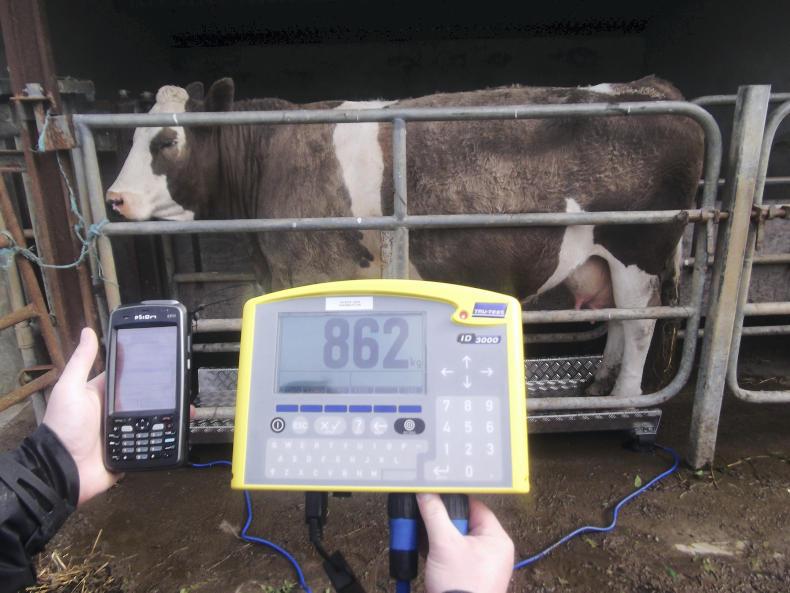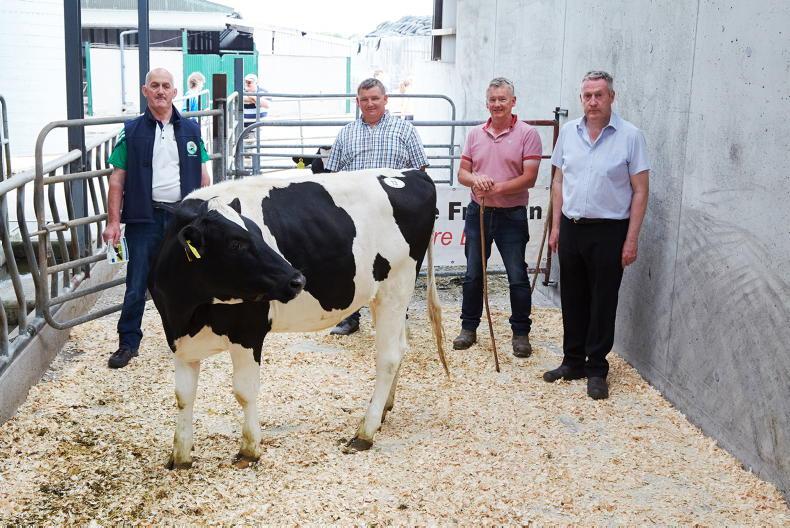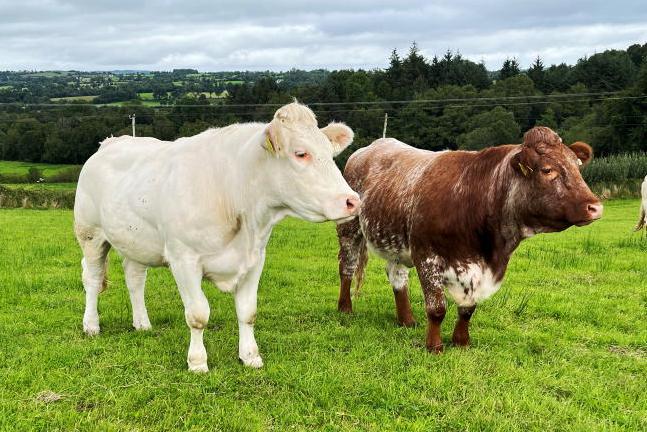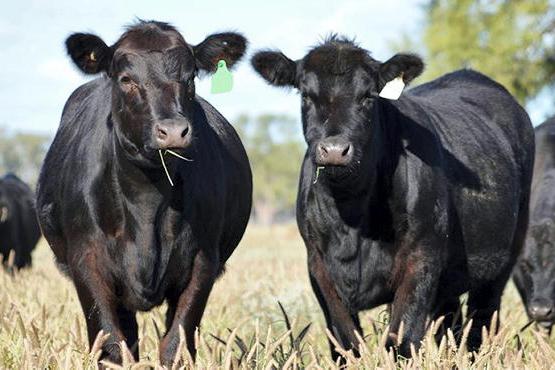For those who applied to the BEEP scheme, weight recording of cows and calves can now take place.
Aside from a €40 payment, the value of weighing stock, particularly cows and calves, should not be underestimated.
System targets
No matter what system you are operating, there are various weight targets that need to be met along the way.
Whether it’s under-16-month bull beef, steer beef or even picking out replacement heifers, hitting particular weight targets is crucial for success.
With autumn-born calves getting ready for turn-out, now is an ideal time to record their weight and see if these targets are within sight.

For under-16-month bull systems, I think calves need to be coming out of the shed at over 280kg.
For under-16-month bull systems, I think calves need to be coming out of the shed at over 280kg.
Let’s work backwards. With a target slaughter weight of 700kg, bulls need to be 500kg on their birthday before the 100- to 120-day finishing period.
Assuming this is 15 August and assuming a turn-out on 15 March, this leaves 150 days at grass to make up 220kg. That’s an average daily gain (ADG) of 1.2kg.
Bulls will need access to high-quality grass, but this ADG is very achievable.
Considerations
However, there are other things to consider. For a mid-August calf to be coming out of the shed at 280kg, it will need to have gained 1.1kg/day from birth.
While this should be met in spring-calving systems, autumn calves find it harder to do just as well.
But they can avail of some compensatory growth if they haven’t performed to their full potential yet.
After weighing, work out the ADG. If it’s below 1.1kg, consider there may be room for some compensatory growth, provided they get access to high-quality swards, but you may need to reconsider the under-16-month system if they aren’t coming close to 280kg.
Making up the ground
For 20-month bull systems and 24-month steer systems (not common in autumn herds), the 280kg mark is again the target, but they can afford to be less, given that there will be time to make up the ground, albeit through concentrates, in the second winter.
To calve replacement heifers at 24 months, they should be 380kg or higher at breeding.
If breeding on 1 November and turnout is on 1 April, turnout weight should be around 170kg (ADG of 1kg for summer).
Weaning efficiency
Weaning efficiency is the percentage of a suckler cow’s weight that she has produced via a calf 200 days into her lactation.
By weighing a calf and its mother, we can determine the weight the cow is weaning as a percentage of her own body weight.
The worldwide standard of excellence in this regard is seen as 50%.
It is undoubtedly a measurement that should be looked at to identify those cows that are not pulling their weight
Some will argue that this measurement ignores the quality of the calf or the visual appeal of the calf to some extent. For weanling/yearling sellers, this can play a role.
But, at the end of the day, farmers are paid on weight, both in live selling and for beef.
Considering the suckler cow costs between €600 and €700 to keep annually, 65% of which is on feed, it is undoubtedly a measurement that should be looked at to identify those cows that are not pulling their weight (excuse the pun!).
I said the gold standard internationally was 50%; in Ireland, we are pitching a target of 42%.
Again, with autumn calves, the weaning weights may be slightly lower indoors, so keep that in mind.
For those who applied to the BEEP scheme, weight recording of cows and calves can now take place.
Aside from a €40 payment, the value of weighing stock, particularly cows and calves, should not be underestimated.
System targets
No matter what system you are operating, there are various weight targets that need to be met along the way.
Whether it’s under-16-month bull beef, steer beef or even picking out replacement heifers, hitting particular weight targets is crucial for success.
With autumn-born calves getting ready for turn-out, now is an ideal time to record their weight and see if these targets are within sight.

For under-16-month bull systems, I think calves need to be coming out of the shed at over 280kg.
For under-16-month bull systems, I think calves need to be coming out of the shed at over 280kg.
Let’s work backwards. With a target slaughter weight of 700kg, bulls need to be 500kg on their birthday before the 100- to 120-day finishing period.
Assuming this is 15 August and assuming a turn-out on 15 March, this leaves 150 days at grass to make up 220kg. That’s an average daily gain (ADG) of 1.2kg.
Bulls will need access to high-quality grass, but this ADG is very achievable.
Considerations
However, there are other things to consider. For a mid-August calf to be coming out of the shed at 280kg, it will need to have gained 1.1kg/day from birth.
While this should be met in spring-calving systems, autumn calves find it harder to do just as well.
But they can avail of some compensatory growth if they haven’t performed to their full potential yet.
After weighing, work out the ADG. If it’s below 1.1kg, consider there may be room for some compensatory growth, provided they get access to high-quality swards, but you may need to reconsider the under-16-month system if they aren’t coming close to 280kg.
Making up the ground
For 20-month bull systems and 24-month steer systems (not common in autumn herds), the 280kg mark is again the target, but they can afford to be less, given that there will be time to make up the ground, albeit through concentrates, in the second winter.
To calve replacement heifers at 24 months, they should be 380kg or higher at breeding.
If breeding on 1 November and turnout is on 1 April, turnout weight should be around 170kg (ADG of 1kg for summer).
Weaning efficiency
Weaning efficiency is the percentage of a suckler cow’s weight that she has produced via a calf 200 days into her lactation.
By weighing a calf and its mother, we can determine the weight the cow is weaning as a percentage of her own body weight.
The worldwide standard of excellence in this regard is seen as 50%.
It is undoubtedly a measurement that should be looked at to identify those cows that are not pulling their weight
Some will argue that this measurement ignores the quality of the calf or the visual appeal of the calf to some extent. For weanling/yearling sellers, this can play a role.
But, at the end of the day, farmers are paid on weight, both in live selling and for beef.
Considering the suckler cow costs between €600 and €700 to keep annually, 65% of which is on feed, it is undoubtedly a measurement that should be looked at to identify those cows that are not pulling their weight (excuse the pun!).
I said the gold standard internationally was 50%; in Ireland, we are pitching a target of 42%.
Again, with autumn calves, the weaning weights may be slightly lower indoors, so keep that in mind.











SHARING OPTIONS